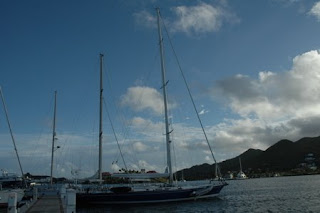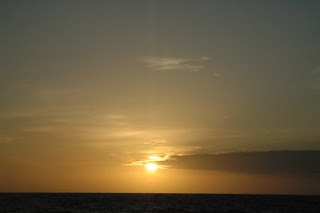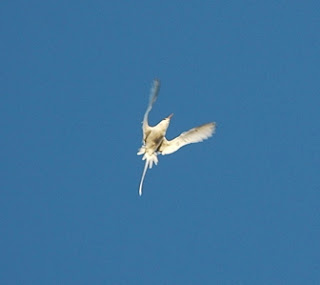It's funny -- I have had books on blacksmithing on my bookshelf for years, but it wasn't until recently that I realized that I wanted to understand better the skill required by taking a class and trying my hand at it. In retrospect, it was obvious that I should have tried it much earlier; makes me want to pursue all those other topics on my bookshelf....
To that end, I had the good fortune of being accepted into and taking a wonderful ironworking/ blacksmithing course at the Haystack Mountain School of Crafts, on Deer Isle in Maine.
 I highly recommend the school if you can make the time (view from the dining room on the right). I had a great couple of weeks learning how to move hot iron. Interestingly, ironwork is very similar to working with clay -- both crafts require moving material at the right time and when the material is appropriately pliable. Steel flows so easily when it is hot -- but its buttery consistency quickly becomes more challenging to work with if one takes too much time to work with a hammer. My fellow classmates were a joy to work with and we all inspired each other to greater efforts and countless hours and late hours in the studio and at the forge. We had the good fortune of being taught by Marc Maiorana (check out his beautiful iron designs at www.irondesigncompany.com - and the beautiful spatula below) and he helped us all forge a strong bond together.
I highly recommend the school if you can make the time (view from the dining room on the right). I had a great couple of weeks learning how to move hot iron. Interestingly, ironwork is very similar to working with clay -- both crafts require moving material at the right time and when the material is appropriately pliable. Steel flows so easily when it is hot -- but its buttery consistency quickly becomes more challenging to work with if one takes too much time to work with a hammer. My fellow classmates were a joy to work with and we all inspired each other to greater efforts and countless hours and late hours in the studio and at the forge. We had the good fortune of being taught by Marc Maiorana (check out his beautiful iron designs at www.irondesigncompany.com - and the beautiful spatula below) and he helped us all forge a strong bond together.
In my mind, an ideal spatula -- forged by our teacher Marc Maiorana
Image: Copyright © 2008 - 2009 by Iron Design Company. Used by permission.
Image: Copyright © 2008 - 2009 by Iron Design Company. Used by permission.
It was amazing what we learned in a short 12 days -- we went from hardly being able to form a taper and not knowing what most of the tools in the studio were, to banging out some tenons for mortise and tenons joints on the power hammer in two heats. A nice change! A forge is definitely in my future at some level.

Marc demonstrating how to forge-weld a loop of steel back on itself.

On the 4th and 5th days, I made a couple of trivets to practice making mortise and tenon joints.

View from Haystack on a misty morning.
My interest in designs inspired by the lamp in Charleston and its curvilinear nature was able to come out in a hanging sign bracket that I decided to design and make over the last couple of days there. It went from a rough sketch on paper to a full-scale chalk drawing on the ground of the studio, to actual pieces being put together. I was happy with the way it came out. Now all I need is a place to put up the sign....

Working on rolling up one of the ends.

Here are all the pieces laid out on the chalk drawing on the ground to check the shapes.

Marc and I hammering the rivets in to hold the whole thing together.

All finished with the paint drying. Now it just needs a sign to hold.

























